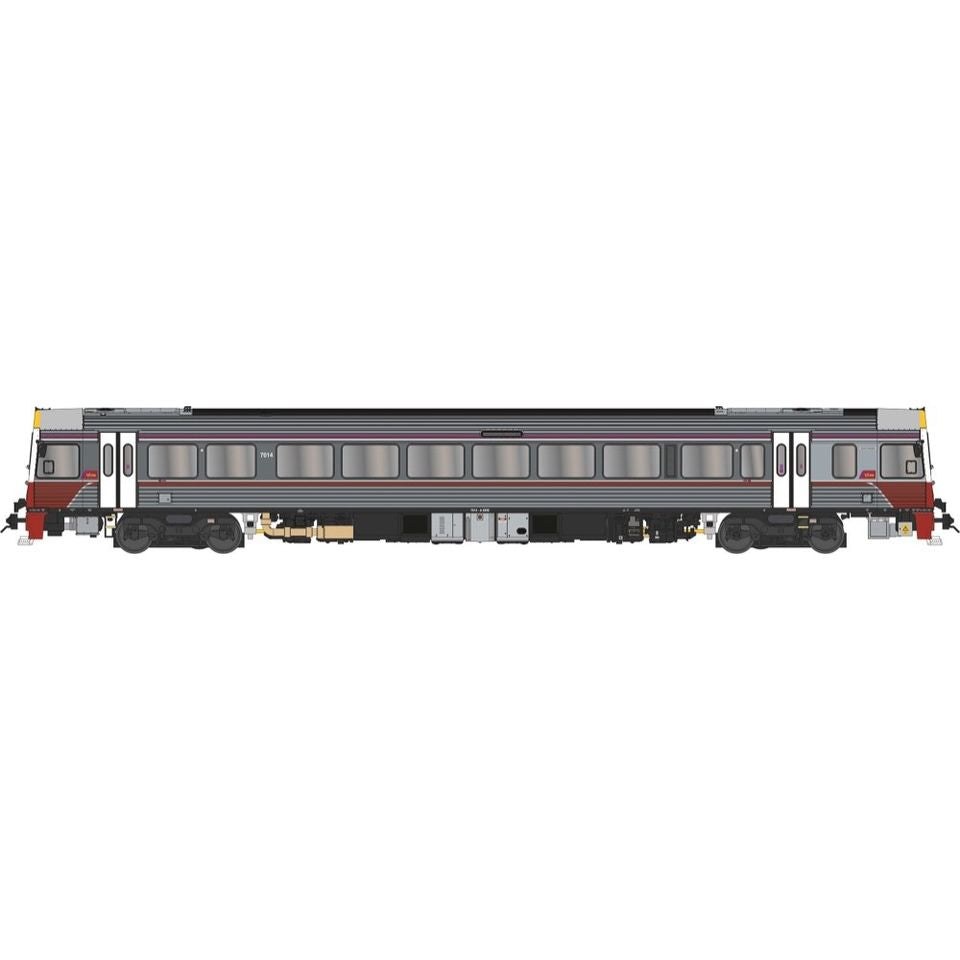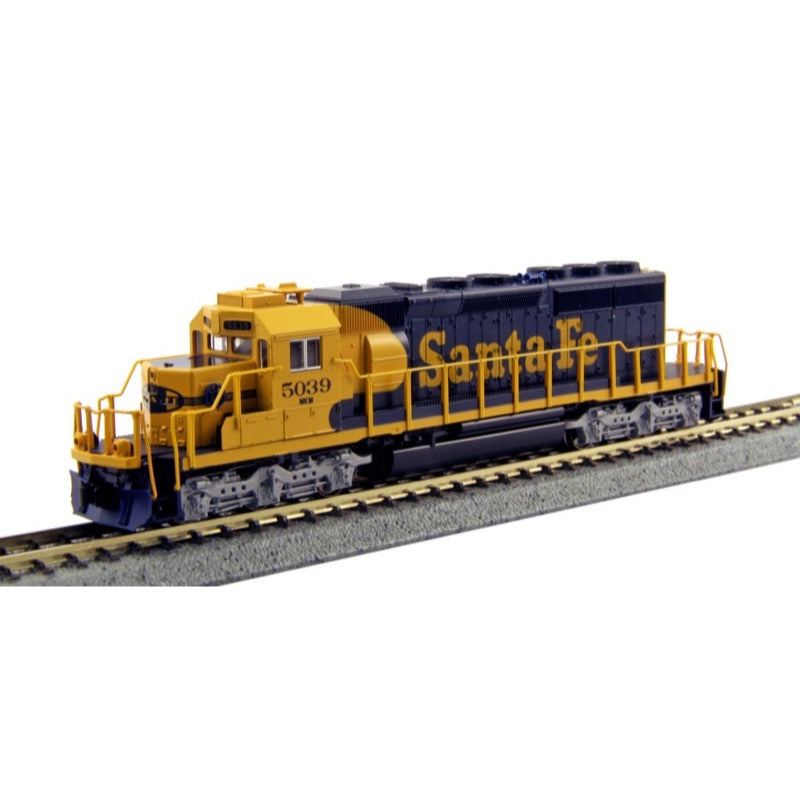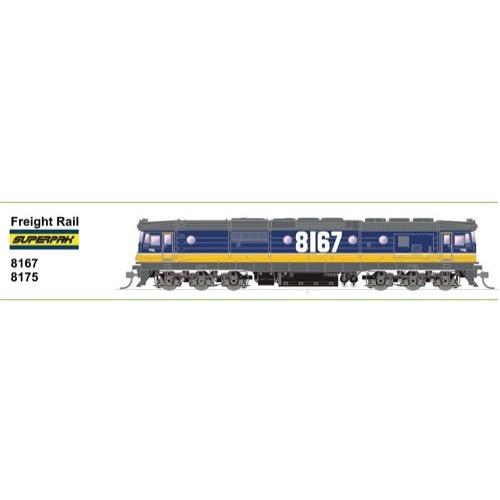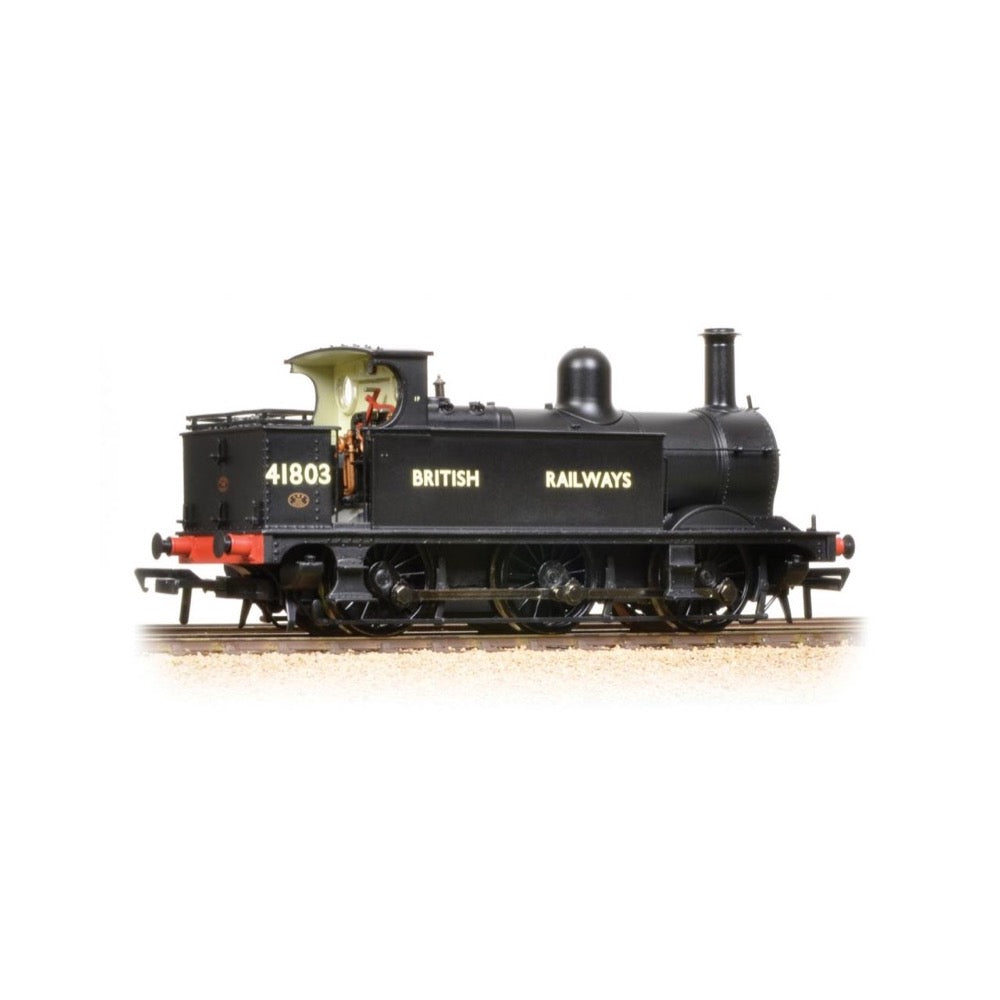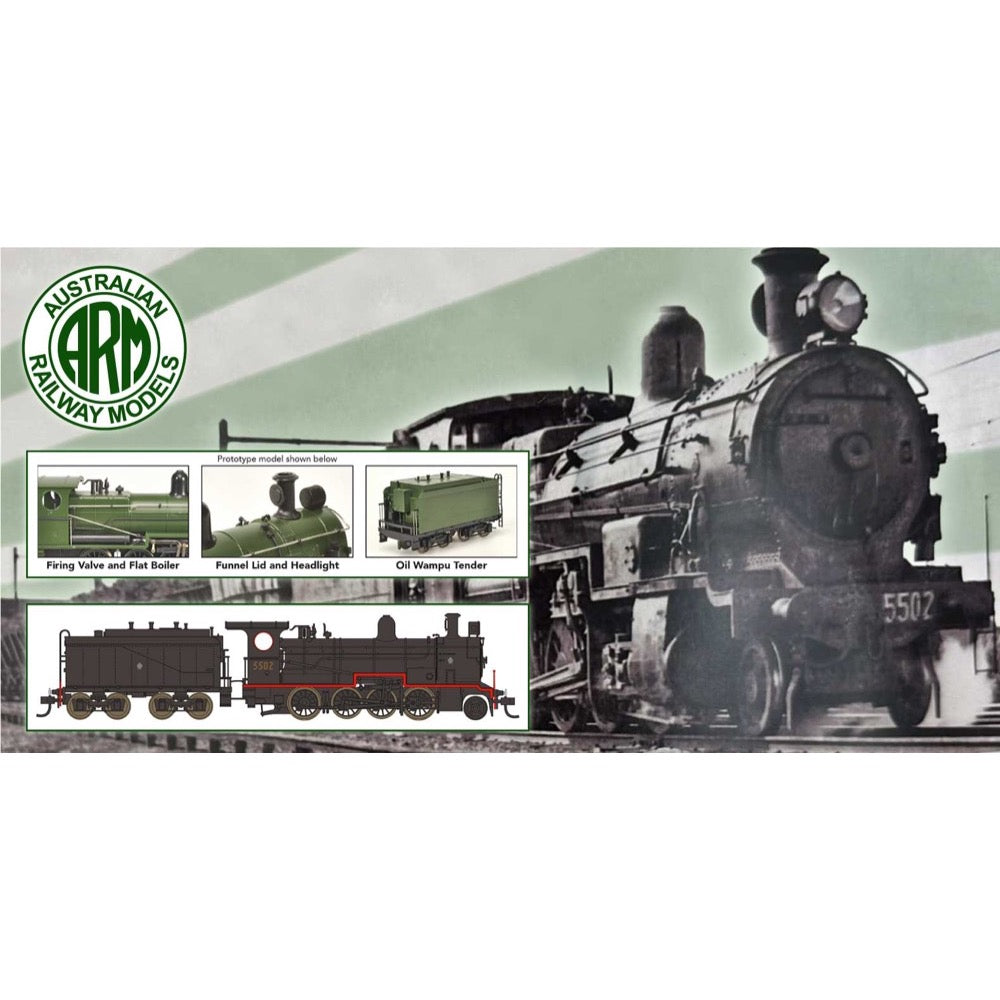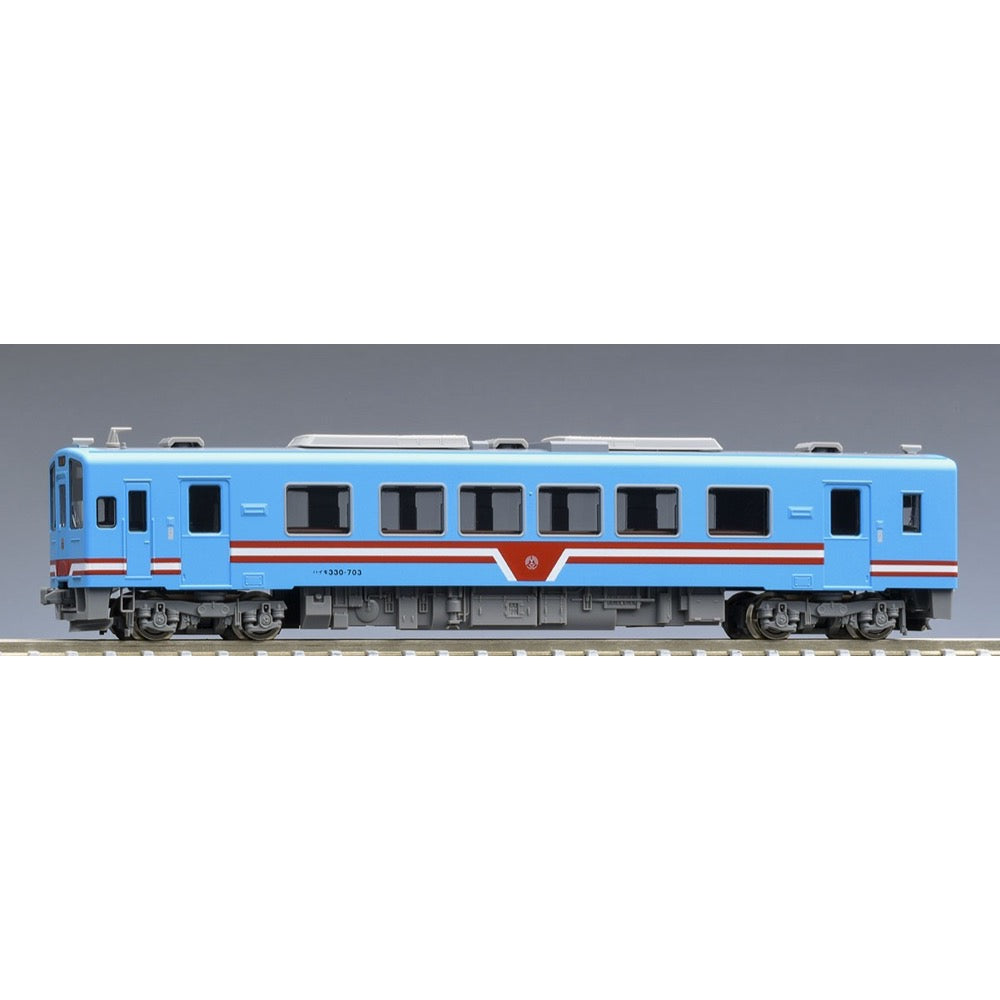
Tomix 8615 N Tarumi Railways HAIMO 330-703
Tarumi Railway is a third-sector railway company that runs between Ogaki Station and Tarumi Station in Gifu Prefecture. The Tarumi Railway Haimo 330-700 series is a diesel car that was introduced in 2011.
The Haimo 330-703 series, which was introduced in 2018, is in Tarumi Railway color, sky blue with red and white stripes.
Features
- Reproduces the Tarumi Railway Hymo 330-700 type car No. 703
- Car number and company emblem are printed
- Head and tail lights are equipped with a constant lighting board and have an ON-OFF switch
- Head lights are lit by incandescent LEDs, tail lights are lit by red LEDs
- Front display does not light up, destination stickers included
- Uses power with flywheel
- Uses silver wheels
- Installed with TN coupler (SP)
- Uses M-13 motor
- Can pass through mini curves
Contents
Vehicle
- Hymo 330-703 (M)
Accessories
- Runner parts: whistle, radio antenna, etc.
- Parts: jig
- Stickers: front destination, etc.
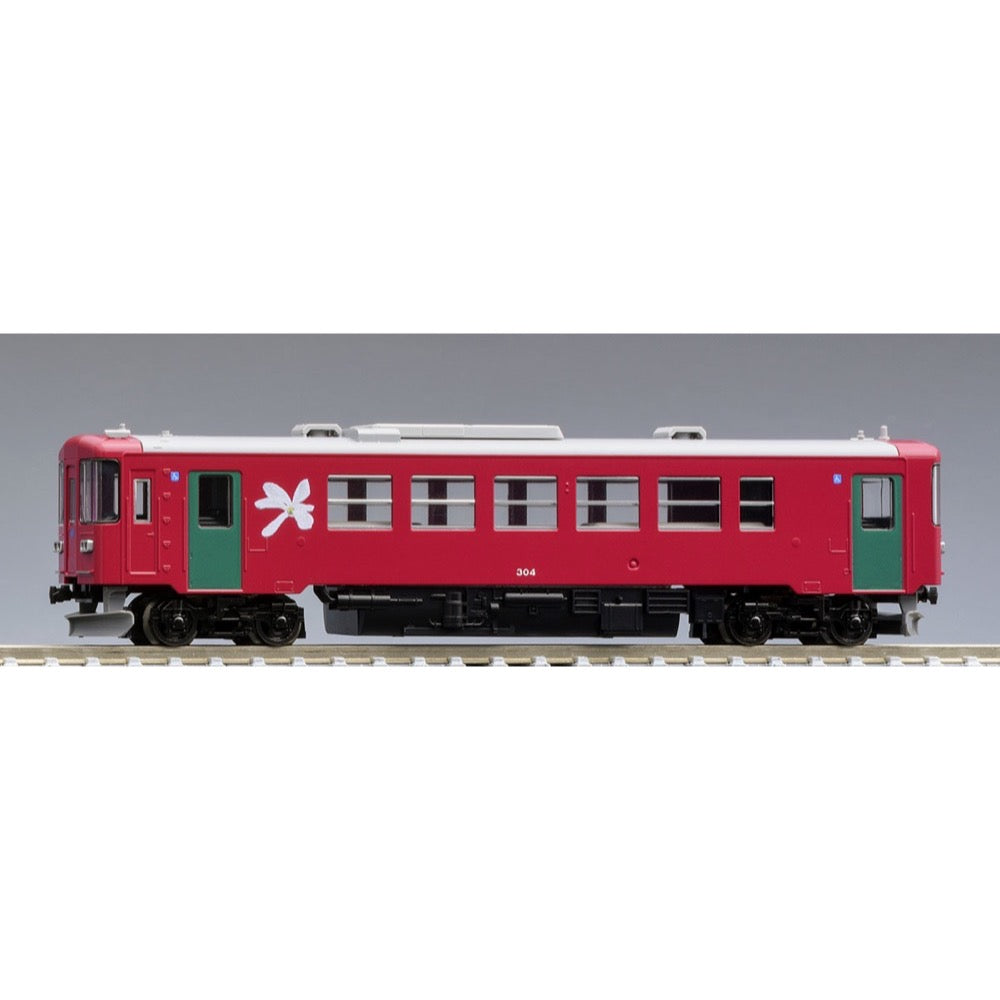
Tomix 8614 N Nagaragawa Railways Nagara 300 No.304
Nagaragawa Railway is a third-sector railway in Gifu Prefecture that runs 72.1 km of business mileage from Minoota to Hokuno on the JR Takayama Main Line and Taita Line, with 38 stations. The Nagara 300 series was introduced in 1998, and seven cars are currently in service. No. 304 is characterized by the magnolia flower on the side.
Features
- Reproduces car No. 304 of the Nagara 300, which has magnolia flowers affixed to the body
- "Mino-Ota" printed on the front display
- Signal flares, whistle, and radio antenna are included as separate parts
- Car number printed
- Special interior light standard equipment
- Interior light is lit by white LED
- Head and tail lights, interior light equipped with constant lighting board
- Headlights are lit by incandescent LEDs, taillights are lit by red LEDs
- Dummy coupler already installed
- Can run on mini curved rails
- Uses power with flywheel
- Uses black wheels
- Uses M-13 motor
Contents
Vehicle
- Nagara 300 (No. 304) (M)
Accessories
- Runner parts: Signal flare, radio antenna, etc.
- Runner parts: Whistle
- Runner parts: Hood frame
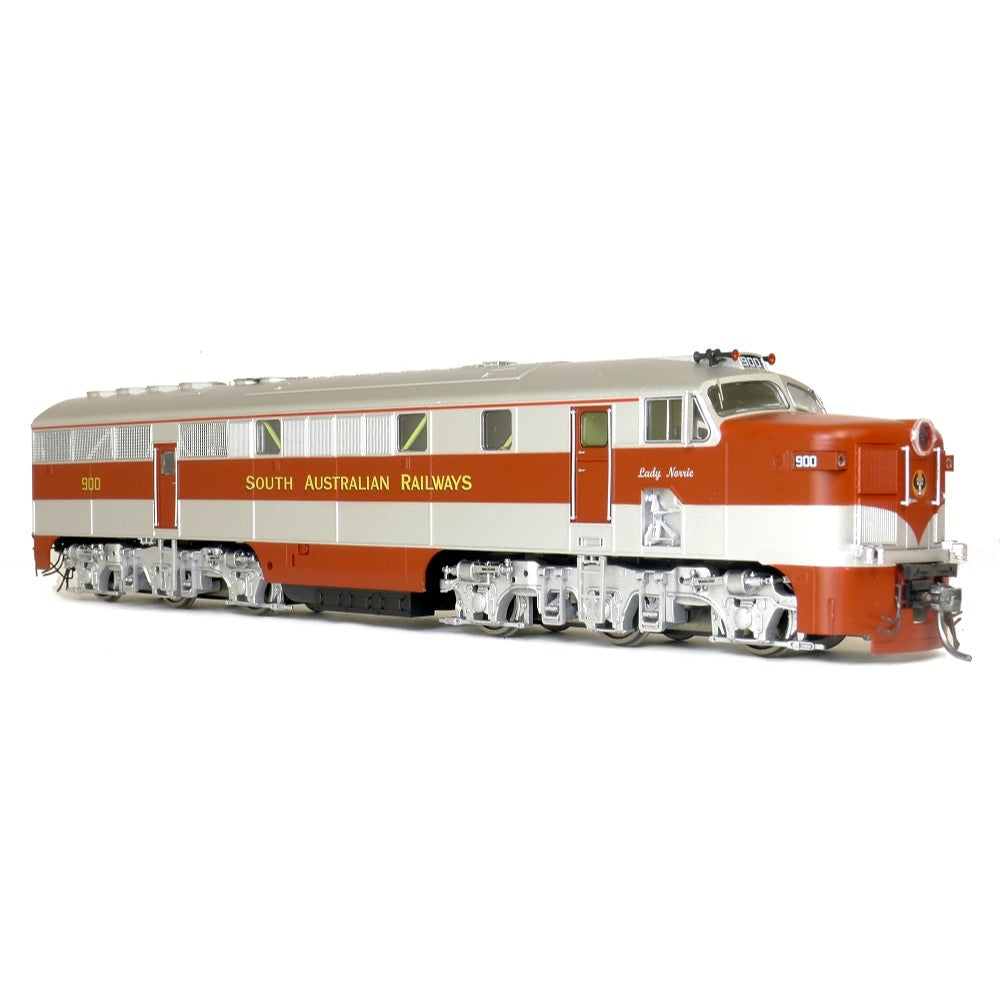
SDS Models HO SAR 900 Class Locomotive 909 DCC Sound
Arguably the first of the streamliners, and Australian built mainline locomotives. The SAR 900 class diesel-electric locomotive were designed and built in-house by the South Australia Railways, they used English Electric V16 engines. English Electric also supplied the generators and traction motors.
The 10 units were delivered between 1951 and 1953, all were out-of-service by mid 1985.
900 Lady Norrie is preserved by the National Rail Museum, she also ventured across into Victoria to appear at Spencer Street station for the Aus Steam 88 festival. 907 and 909 were operated by SteamRanger tourist railway until 1995.
We have produced 4 body variants for the 900 class:
- Early service without large forward roof hatch with single Dynamic Brake fan shroud.
- Early service with large forward roof hatch with twin Dynamic Brake shroud.
- Late service with front twin sealed beam headlight.
- Preservation with front and rear twin sealed beam light.
Features
- Highly detailed Ready-to-Run HO gauge model
- Precisely tooled plastic body (ABS)
- Genuine Kadee scale head whisker coupler
- Separately applied handrails and detail parts
- 5-Pole skew wound electric motor and dual flywheels
- All wheel drive and electrical pickup
- LED head and marker lights
- All models come standard with an MTC 21 pin motherboard
- Exclusive sound by DCCSound

Hornby Dublo R30261 OO LNER A4 Class 4-6-2 4468 Mallard Great Gathering 10th Anniversary Era 10 Locomotive
The LNER Gresley A4 is one of the most iconic express locomotives in Great Britain, with its streamlined casing a classic symbol of the attitude towards speed and design in the 1930s, which saw increased competition to the railways from road and air travel. The LNER Board knew that they had to make travel between the major cities faster, comfortable and more reliable.
Nigel Gresley, the LNER's Chief Mechanical Officer, travelled on the Fliegende Hamburger diesel locomotive in Germany and was impressed by its streamlining, although he realized it was only efficient at high speeds. Gresley was certain that a modified A3 Pacific, with streamlining, could haul greater loads than other locomotives at the same speed or faster and a series of trials were conducted to confirm the A3's suitability.With the trials successfully completed, the LNER Board gave Gresley the go-ahead to create the "Silver Jubilee" streamlined trains, the first of the new streamlined A4s.
The streamlining of the A4s' steam circuit, higher boiler pressure and extension of the firebox to create a combustion chamber, made them more efficient than the A3 as they consumed less coal and water- especially later on when they were also fitted with a Kylchap double chimney. This improved their free steaming capabilities further.
Their streamlined design not only made them capable of high speeds but created an updraught of smoke, obscuring the driver's vision, a major problem on the new Class A4 engines. The story goes that during wind tunnel testing, after several unsuccessful efforts to get the smoke to lift clear, a thumbprint was inadvertently left on the clay model just behind the chimney. This succeeded in clearing the smoke and was incorporated into the final design.
The most famous of the A4 locomotives is surely 4468 Mallard, the locomotive that broke and still holds the world record for the highest speed achieved by a steam locomotive. This record was achieved at the height of the streamlined battle between Gresley's A4 and the Streamline Coronation of Stanier's LMS. Mallard would go on to serve under BR as 60022 before being withdrawn in early 1963 having been earmarked for preservation as early as 1960, its historical significance recognised and understood.
Hornby Dublo A4 models feature a diecast body, just as their original Hornby Dublo counterparts would have seen. This is coupled with enchanted decoration, which when paired with the diecast of the boiler, provides a realistic finish to the body. The models contain a 5 pole motor with flywheel and are DCC ready with an 8 pin socket.
Specifications
- Item Length - Without Packaging (cm): 29.1
- Item Height - Without Packaging (cm): 5
- Item Width - Without Packaging (cm): 3.5
- Item Weight - Without Packaging: 0.6
- Item Scale: 1:76 Scale 00 Gauge
- License: Yes
- License line: Produced under licence for SCMG Enterprises Ltd. © SCMGE. Every purchase supports the museum.
- Finish: Painted
- Colour: Blue
- Gauge: OO
- DCC Status: DCC Ready 21 pin socket
- Operator: LNER
- Designer: Sir Nigel Gresley
- Wheel Configuration: 4-6-2
- Livery: LNER Garter Blue
- Minimum Curve (mm): Radius 2
- Motor: 5 Pole Skew wound
- Number of Parts: 1
- Class: A4 Class
- Buffer Type: Sprung Metal Buffers
- Coupling Type: NEM Tension Lock
- Hornby Decoder Compatibility Primary: HM7000-8TXS: Bluetooth® & DCC Sound Decoder (21-pin)
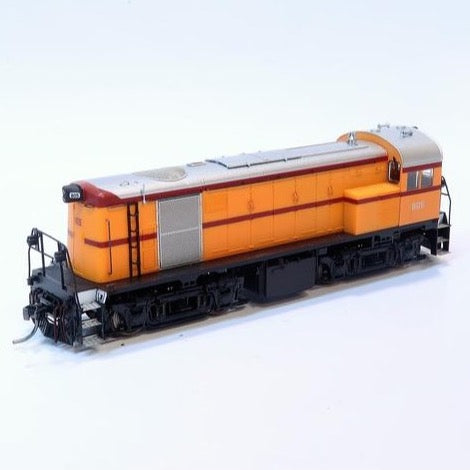
SDS Models HO 805 SAR Traffic Yellow 800 Class Locomotive DCC Sound
Entering service from the mid 1956 onwards these 10 English Electric 750 HP shunting locomotives were numbered from 800 to 809. They were predominantly found working around Port Adelaide and in particular Gilman Yard. Later and from time to time they could also be found working Passenger trains around the suburbs. They remained in service until the late 80s and some units through until 1991, all except 801 were scrapped. When AN commenced operations the class leader 800 was renumbered to 810.
Features
- Highly detailed Ready-to-Run HO gauge model
- Precisely tooled plastic body (ABS)
- Genuine Kadee scale head whisker coupler
- Separately applied handrails and detail parts
- 5-Pole skew wound electric motor and dual flywheels
- All wheel drive and electrical pickup
- LED head and marker lights, body mounted
- All models come standard with an MTC 21 pin motherboard
- Exclusive sound by DCCSound
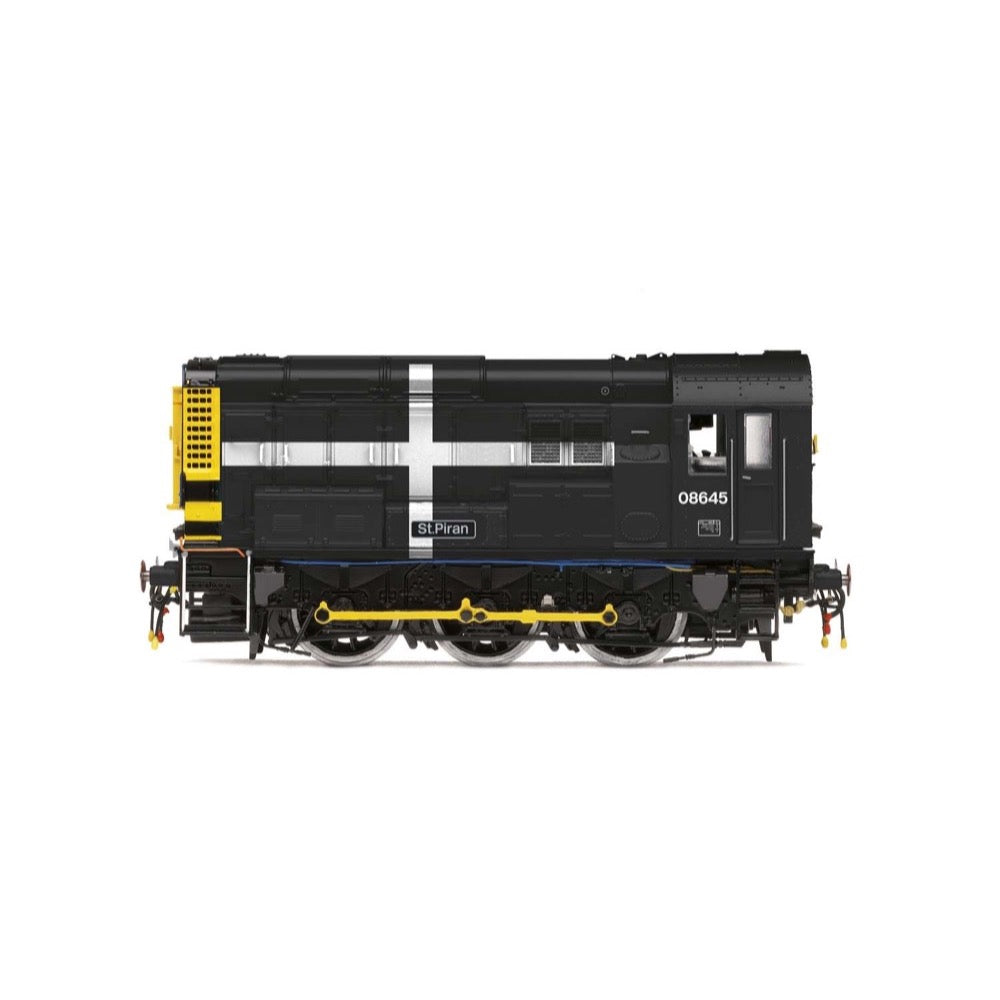
Hornby R3900 OO GWR Class 08 0-6-0 08645 St. Piran
Built at Horwich Works, D3812 entered traffic on 13 February 1959 allocated to Newport Pill and the locomotive was to remain in Wales, albeit allocated to different depots until the closure of Landore in December 2018. During this period, air brakes were fitted to D3812 in October 1971 and in March 1974, the locomotive was renumbered as 08645 under TOPS.
On leaving Landore, 08645 was moved across to GWR's Long Rock Maintenance Depot and on 13 April 2019 at the public open day held to raise money for the Penlee Lifeboat Station and RNLI. The locomotive was unveiled in a special 'Kernow' livery and bearing the name 'St. Piran', after the patron saint of Cornwall.
With such a huge background and duration of service, the 'St. Piran' earns a well-deserved spot in any railway collection.
Includes
- 1x Locomotive Diesel
Technical Specifications
- Item Length - Without Packaging (cm): 12.4
- Item Height - Without Packaging (cm): 5
- Item Width - Without Packaging (cm): 3.5
- Item Weight - Without Packaging: 0.18
- Item Scale: 1:76 Scale 00 Gauge
- License: No
- Finish: Painted
- Colour: Black
- Gauge: OO
- DCC Status: DCC Ready 8 pin socket
- Operator: GWR
- Designer: BREL
- Livery: GWR
- Minimum Curve (mm): Radius 1
- Number of Parts: 1
- Motor: 5 pole skew wound
- Class: Class 08
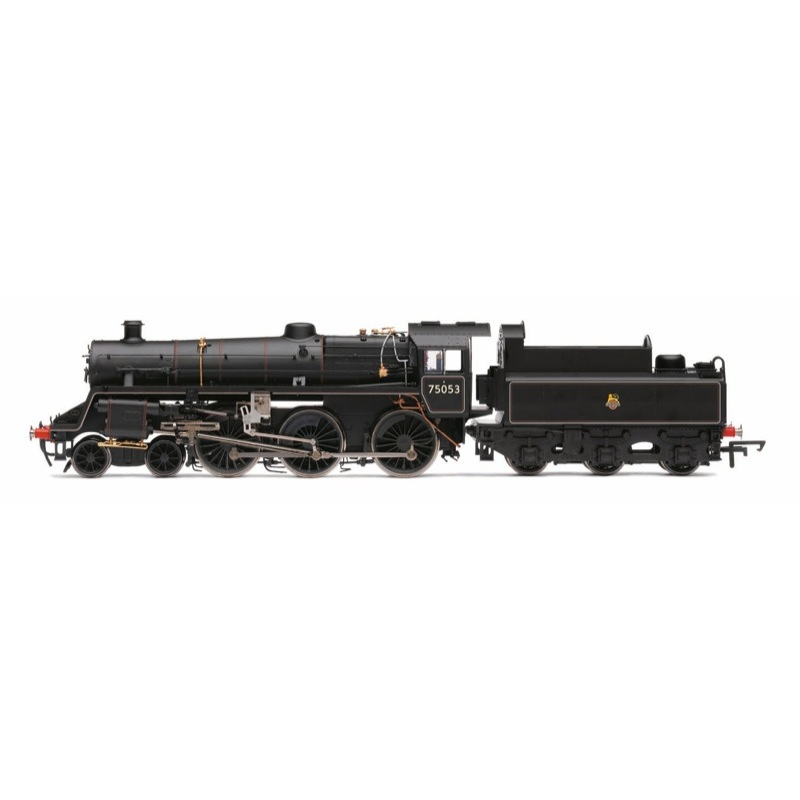
Hornby R3548 OO BR Standard 4MT Early BR
When the London Midland Scottish Railway came up with its initial standard designs in 1947, it was considered that there was no call for a mixed traffic Class 4, 4-6-0 locomotive. The duties for which the 4-6-0 design were suited to were amply covered by existing traction types and it wasn't until Nationalization in 1948, that the Western Region of British Rail felt that this type of locomotive was required for use on its secondary route services. The restricted axle loading for the coastal routes to Aberystwyth and Pwllheli precluded the use of the heavier Standard Class 5, whilst an update on the GWR Manor design was not feasible because of gauging issues on the other British Rail regions, who were also looking to replace their ageing locomotive stock.
Robert Riddles, British Rail's Head of Mechanical and Electrical Engineering, set about designing a new locomotive, principally from BR's Brighton Works, as a solution to this problem. Many of the components for the Standard Class 4MT were similar to those used in the Standard Class 5 and as a class, there were few significant variations during the course of their construction. Between mid-May 1951 and January 1956, eighty locomotives were built at BR's Swindon Works, in six Lots, a final order of ten locomotives for the Eastern Region being cancelled in September 1956. The first ten locomotives were delivered to the Western Region between May and October 1951 and by the end of the year were all operating from Shrewsbury Shed. Employed on local and semi-fast duties the engines were ideally suited to their task, but attempts to displace Class 5 duties on heavy passenger and goods traffic proved unpopular, as happened on the former LNWR central Wales line to Swansea.
The Class 4s suffered from poor steaming under load and were under-powered, their timekeeping suffering as a consequence. Deliveries continued, with the London Midland region receiving three batches of locomotives, the Western a further batch and the Southern receiving a batch. By the beginning of 1956, Class 4MTs were operating across the network, from Dover to Scotland, Plymouth to Cambridge, mostly paired to their original tenders, of which three types were used. The first fifty were paired with BR2 3,500 gallon tenders, whilst fifteen received BR2A 3,500 gallon tenders. The Southern Region, with its lack of water troughs, had a requirement for a greater capacity tender and so the fifteen locomotives allocated here were paired with BR1B 4,725 gallon tenders.
Withdrawal of the class began in October 1964, with No.75067 and continued on a regular basis until August 1968, when the last five were withdrawn. Six locomotives were saved for preservation, two purchased direct from BR and four being rescued from Woodham's scrapyard at Barry. Locomotive 75053 was built at Swindon, to Lot 408, in late 1956 and entered traffic with the London Midland Region at Chester Midland. A well-travelled locomotive, 75053 spent alternate spells at Ryhll and Chester Midland before moving on to Mold Junction in September 1960. In April 1962, a move to Bletchley was followed in January 1965 by allocation to Stoke-on-Trent, from where 75053 was withdrawn in September 1966.
Maximum curve Hornby 2nd radius + / 438mm+.
Specifications
- Item Length - Without Packaging (cm): 28.7
- Item Height - Without Packaging (cm): 6
- Item Width - Without Packaging (cm): 11.2
- Item Weight - Without Packaging: 0.63
- Item Scale: 1:76 Scale 00 Gauge
- License: No
- Finish: Painted
- Colour: Black
- Gauge: OO
- DCC Status: DCC Ready 8 pin socket
- Operator: British Railways
- Designer: Robert Riddles
- Wheel Configuration: 4-6-0
- Livery: Early Crest
- Minimum Curve (mm): Radius 2
- Motor: 5 Pole Skew wound
- Number of Parts: 1
- Class: Standard 4MT


